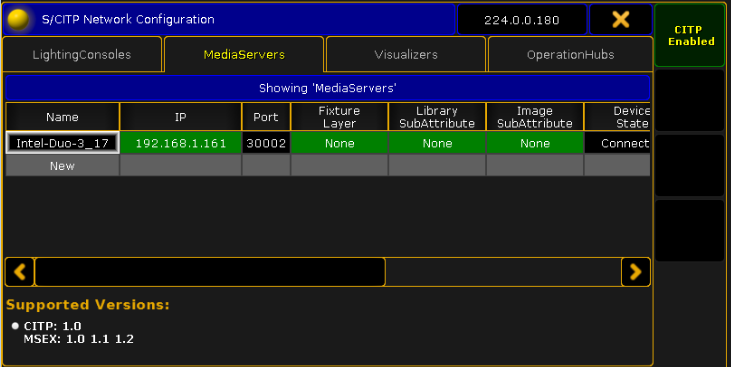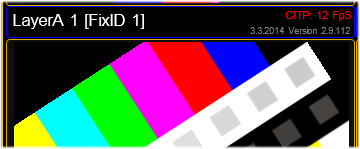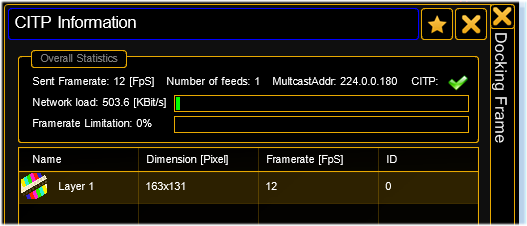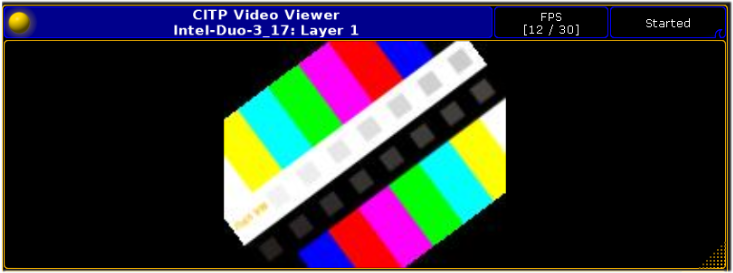- grandMA2 User Manual
- grandMA3 Mode2
- grandMA2 Quick Start Guide
- grandMA2 Quick Manual onPC solutions
- MA 3D
- MA VPU
- Introduction
- Help from MA technical support
- System requirements
- For your Safety
- Functions and Features
- Transition from grandMA video to MA VPU
- Teaser Mode
- Comparison VPU plus / VPU basic / VPU light
- Main Features
- Installation and Maintenance
- Startup
- Software update
- Service Packs
- Update of Fixture Types
- Backup
- Handling backups with the VPU
- Start Acronis on VPUs with serial Numbers up to # 86 on
- Start Acronis on VPUs with serial Numbers from # 87
- Restoring an image with Acronis
- Storing an image with Acronis
- Backup the VPU content after shipment
- Access VPU via Network
- Version of grandMA desk or grandMA onPC (off-line)
- IP Addresses
- IP Address of the PC
- Art-Net IP Address
- EDID Manager
- CITP / MSEX Protocol
- Installation and Maintenance
- Communication with the grandMA Desk Series
- Connection with the grandMA desk
- Connection with the grandMA onPC (off-line) software
- Connection States
- Data Management
- Master slave
- Principle function diagram
- Layer Properties
- Layer Reference
- Virtual Outputs
- Virtual Output: Configuration of a TripleHead2Go Digital Port
- Predefined Constellation
- Several MA VPU applications in one grandMA show
- Quickstart with grandMA2
- Program surface
- Internal Touch-Screen VPU plus
- Internal Screen VPU light
- Menu Bar
- File...
- View...
- Render...
- Help...
- Toolbar
- Status Bar
- Preview
- Multi Preview
- Content Editor
- Content: Image Pool (I-Pool)
- Content: Text Ticker
- Content: Eff1 Type...Eff4 Type
- Content: 3D Objects
- Content: Mask
- Warper
- Warper Fullscreen View
- Warper Basic Operation
- Warping
- File Browser
- Features Attributes and Functions
- Order of Effect Execution
- Softedging
- Keystoning
- Pixel Mapper
- VPU - Pixel Mapper Graphical View
- Pixel Mapper Toolbar
- Pixel Mapper Editor
- VPU - Pixel Mapper Grid View
- Console - VPU Pixel Mapper View
- VPU - Pixel Mapper Graphical View
- Creation of customized 3D Objects
- Content Specifications
- Rovi Total CodeStudio for converting your content into MPEG2
- Hap Content Converter
- Warnings
- Keyboard Shortcuts
- FAQ and Troubleshooting
- Supplement MA Lighting
- Intended use
- Data
- Symbols and warning labels
- LIMITATIONS
- Transport
- General Safety Instructions
- IMPORTANT SAFETY INSTRUCTIONS
- Electric shock warning on the rear of the grandMA
- Safety and Environment
- Quickstart Connect VPU plus
- Quickstart Connect VPU light
- Switching the apparatus On/Off
- Maintenance
- Conformity
- Introduction
- Release Notes
CITP / MSEX Protocol
CONTROLLER INTERFACE TRANSPORT PROTOCOL / MEDIA SERVER EXTENSION, is an open network protocol used between visualizers, lighting consoles and media servers to transport non-show critical information during pre-production.
The VPU can be used as a Video Streaming Server to a console or a visualiser e.g. MA 3D. Each output and each layer can be streamed independently.
The resolution of each stream is limited to max 64 kbyte per frame and depends on the ratio of the rendered output. From this follows that resolutions are below 200x200 pixels depending on the ratio of the rendered source.
The frame-rate is set by the displaying visualizer and is limited by the VPU software: Currently 30 fps are shared for all outputs (1 output = 30 fps, 2 outputs = 15 fps each, 3 outputs = 10 fps each) and all layers share 15 fps (1 layer = 15 fps each, 10 layers = 1.5 fps each, 20 layers = 0.7 fps each).
If the complete traffic on the network adapter reaches 30MBit, then the VPU will start to limit it output of CITP even more.
CITP connection is not possible when running CITP sender and CITP receiver at the same computer. Setup CITP menu title bar shows current CITP multicast address. This address can be changed. Changing this address changes CITP multicast address for all MA stations (consoles, MA 3D, MA VPU) in current session. Be aware, when changing this address connection to third party CITP stations may not be possible anymore.
CITP can only be enabled in the grandMA2 software if connected to the VPU. To enable CITP on the desk go to Setup CITP Network Configuration and set CITP to Enabled:

At the VPU the CITP properties can be monitored. Each headline in the Multi Preview indicates if CITP is requested for that output and displays the outgoing fps:

Additionally the status bar in the bottom of the GUI reflects the CITP status.
In the docking frame a CITP Status window can be opened to monitor the CITP local and global setting and to see the outgoing streams information:

At the desk a CITP Video window can be created via: Create Basic Window - Other - CITP Video Viewer. The Window looks like this:

If the Show Mode is enabled, CITP is automatically disabled.


